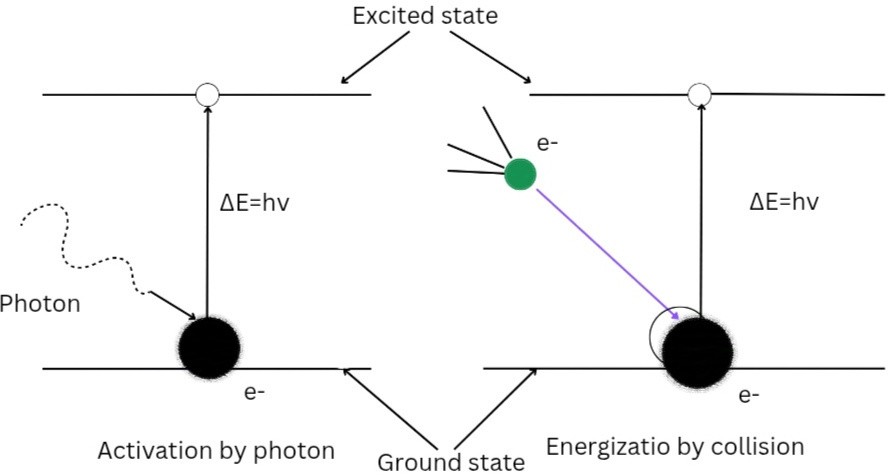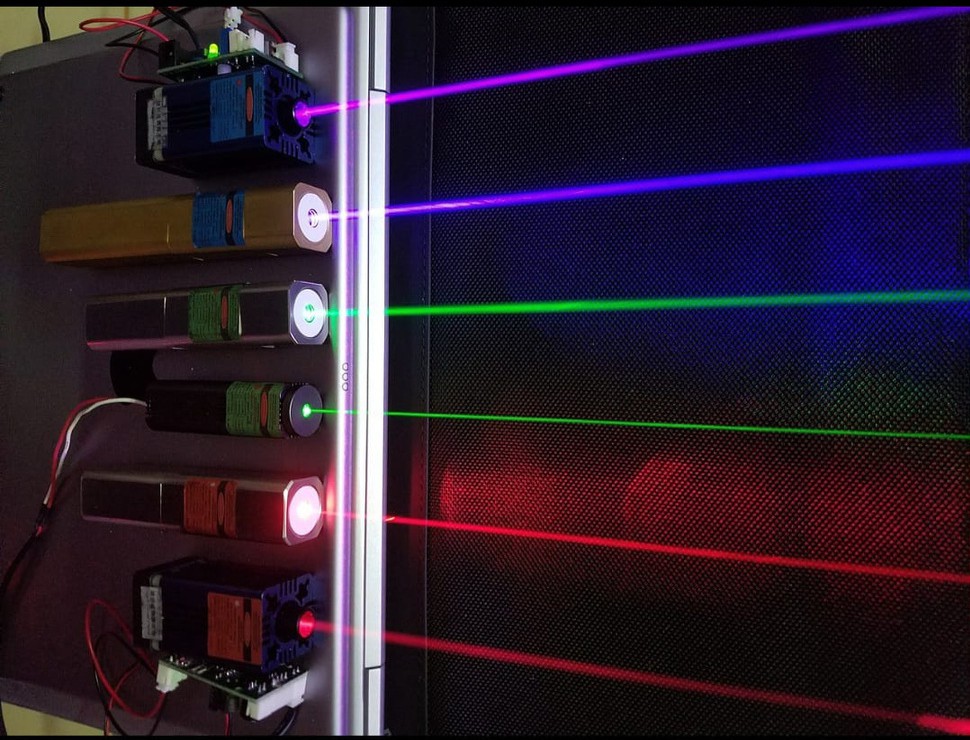Ijraset Journal For Research in Applied Science and Engineering Technology
- Home / Ijraset
- On This Page
- Abstract
- Introduction
- Conclusion
- References
- Copyright
Photon Communication Systems:
Authors: Priyanjali Goswami, Shantanu Kushwaha, Nidhi Rajput, Gurusharan Kaur
DOI Link: https://doi.org/10.22214/ijraset.2025.66606
Certificate: View Certificate
Abstract
Photon communication is an optical free-space communication. Speculate to be the upcoming generation wireless communication technology due to its latent features like high data rate increased bandwidth unregulated spectrum immunity to interference etc. Laser communication offers a viable alternative for inter-satellite links and other applications to radio frequency (RF) communication, where high - performance links are necessary. In defense, laser communication facilitates reliable satellite communications (SATCOM), secure drone operations, and high-speed data exchange between naval vessels, aircraft, and ground units.
Introduction
I. INTRODUCTION
Optical wireless communication system is wireless connection through the atmosphere. They work similarly to optical fiber with the exception of the beam is transmitted free space. While the receiver and transmitter must require line-of-sight eliminating the need for broadcast right and underground cables. Our modern world laser dominate in a variety of forms ranging from tiny diode laser in all DVD(Digital versatile disc)&CD (Compact disc) players to laser industrial laser used extensively for welding and cutting. In fact laser is used in thousands of applications in every section of modern society including communicational technology entertainment and consumer electronics information, science and industry the medical field and defense.
II. "HISTORY OF L A SE R DISCOVERY
During his studies on the brightness of light, frequency and temperature, Max Planck found that light is a form of electromagnetic radiation in 1900, the scientific knowledge of light was purely constrained to observing its characteristics and behavior in bygone era. However, the mechanism by which light was generated was still unaccustomed.
Albert Einstein described "On the quantum theory” in 1900,the theory of stimulated emission in his publication .
This postulated that:
Light travels in bundles of energy called photons, and Most atoms exist in a standard ground energy level (E0), however, a small number of these naturally occur at excited energy levels (E1, E2, E3, … En).Einstein introduce that by giving energy to atoms in lower energy state, they could be excited to a upper energy state. Following their excitation to a higher energy level, they return or fall to their original energy level.
Throughout this process, the atoms emit the energy they acquired to spontaneously, in the form of photons. This produced the basis of stimulated emission which is a measure idea in the development of laser.

Figure- Process of LASER
In the procedure of Laser emission, transition of light for stimulation of atoms to excited energy states.[2] Scientists grew interested in the microwave electromagnetic spectrum of light and radar equipment during the Second World War, After the War physicists were looking to intensify stimulated emission at a wavelength shorter than microwave spectrum, in 1954 at the Columbia University in New York Charles Townes building the first MASER (Microwave Amplification by Stimulated Emission of Radiation). At the same time Alexander Prokhorov and Nikolai Basov built a maser precursor. This led to the 1964 Nobel Prize for Physics for their research in the field of stimulated emission.
Forty three years after Einstein proposed his quantum theory of radiation, on 26th of May 1960, Dr. Theodor Harold Maiman exhibited the first operational laser. He introduced the first visible light laser using a silver coated ruby crystal, mirror and first lamp.
In the early generation of laser were the main gases used like Helium -Neon, Nitrogen and Carbon dioxide. In 1961 the He-Ne laser was developed by Ali Javan. In the same year the Neodymium laser was invented. Other gas lasers were introduced by Patel (CO2 laser) and Bridges (argon laser). It was not until 1966 where Soarokin and Lankard built the first ruby-based dye laser, that liquid materials were used as the active medium. As the spectrum of media has increased, so has the use of lasers across industry.
Lasers were quickly adopted for their therapeutic benefits in medicine. Today, they are widely used in various surgical fields and medical, and their use is escalating rapidly. In the past, laser communication was used for secure short-range communication in defense. It was mainly tested for sending data between submarine, military bases, and aircraft. Lasers were also used to measure distances accurately and guide weapon. Today, they are widely used in defense equipment’s.
III. FEATURES OF LASER COMMUNICATION SYSTEM
Laser can transmit data at effectively higher rates compared to conventional Radio frequency system. This allows of large amount of information for faster transmission.
Laser beams have a very narrow disparity meaning they scatter out very little over long distances. The ideal antenna size is usually proportional to the wavelength of the signal, which can be used in term of power consumption and weight size especially for space application.
The focused beam and high directionality of laser make them less prone to interception and eavesdropping compared to RF signals which can be more easily detected by unintended receiver.
Laser can be highly power-e?cient to transmit data over long distance while requiring less energy compared to Radio frequency system. Laser beam are directional and highly focused diminishing signal spread and interference.[1]
A. Applications of Laser Communication
Laser communication systems are being used in a variety of applications, including:
- Satellite Communication: Laser communication systems are used to communicate with satellites because they can send data much faster than traditional radio frequency (RF) communication systems. This means laser systems can transfer more information in less time.
- Military Communication: Laser communication systems are being used for military communication. This is because laser communication systems are more defended than Traditional radio frequency (RF) communication systems.
- Free-Space Optical Communication (FSO): FSO is a type of laser communication that is used to communicate between two points on the ground. FSO systems are being used in a spectrum of applications, such as backhaul for cellular networks and point-to-point communication.
B. Laser in Defense Sectors
Current laser application:-
The military uses of laser for Range finding (RADER), Bomb targeting, Battle simulation and Detecting radioactive radiation.
- Arising Technology: Laser perhaps in the upcoming future to detect underground weapon in new forms.
- Future Probablity: Laser could eventually become implemented on aircraft in air force, submarine in navy-tank in Indian army.
- Tykma: Electronic provides laser marking systems for field gear, firearms, optics, and field gear, superior customer service and offering customization.
C. Current Application for Laser in the Defense Sector
In spite of the fact that development of laser-augmented aircraft like those of a science fiction film are a probability in the imminent future
- Range Detection: Laser rangefinders are invaluable tools for the military, enabling precise distance measurements to targets. By emitting a focused beam of light and measuring the time it takes for the reflection to return, these devices provide critical information for accurate targeting, surveillance, and navigation.
- Targeted Bombs: Laser-guided Bombs often referred to as "smart bombs," employ a sophisticated targeting system. A laser beam illuminates the designated target, and the bomb, equipped with specialized sensors, detects and tracks this laser reflection. This guidance mechanism allows the bomb to precisely strike the intended objective, minimizing collateral damage and enhancing mission effectiveness.
- Military drill: Laser-based combat simulation systems are widely used in military training. These systems employ simulated weapons that emit laser beams, allowing soldiers to engage in realistic combat scenarios without the use of live ammunition. By providing immersive and interactive training experiences, these systems enhance situational awareness, tactical decision-making, and overall combat effectiveness.
D. Optical Wireless Communication
Underwater laser communication has revolutionized covert communication for submarines operating in hostile environments. Traditional radio communication posed a significant risk of detection by enemy forces. However, laser-based systems transmit information through narrow, focused beams of light making them far less susceptible to interception. This technological advancement has significantly enhanced the safety and reliability of underwater communication for military operations.
- Detecting Bombs: Laser-induced X-ray generation has shown promise in detecting trace amounts of radioactive elements like uranium and plutonium, even when these materials are shielded by thick metallic barriers. This technology offers a powerful tool for identifying potential threats, such as hidden explosives or nuclear materials, in various security applications.
The future of Laser in defense sector: U.S. military devolved the high energy laser weapons, such as the 50kW laser weapon system, which is designed to defend against drones, missiles, and other aerial threats.

Figure: Laser weapons
The integration of laser weapons onto military aircraft, such as the Boeing YAL-1, which was a modified Boeing 747 aircraft equipped with a chemical oxygen iodine laser.[1]
We can use of lasers for precision guidance and targeting of weapons, such as the Laser Maverick missile, which uses a laser designator to guide the missile to its target.
- The development of laser-based communication systems for military applications, such as secure data transmission and high-speed communication links.
- The use of lasers for counter-drone technology, such as laser-based systems that can disable or destroy drones in flight.
- It’s anticipated that lasers will soon be integrated onto Air Force aircraft and helicopters, and will also be fully accessible for Army deployment, according to Popular Science.
- Given the proliferation of drones in recent years, the Navy has expressed interest in deploying lasers on their Humvees to neutralize any unidentified or potentially hostile drones [8].
Directed Energy Weapons (DEWs) utilizing lasers are currently under active research and development by numerous nations. A significant challenge in laser weapon development is mitigating atmospheric effects such as thermal blooming, which can be exacerbated by rain, snow, smog, dust, and chemical obscurants.
Lasers require a clear line of sight, whether in air or vacuum, for effective operation.
Various laser technologies possess the potential to be employed as incapacitating weapons. This capability stems from their ability to induce temporary or permanent vision impairment in humans.
India has developed KALI (Kilo Ampere Linear Injector), a high-powered laser system designed to neutralize enemy missiles and aircraft. The weapon's energy beams possess the capability to instantaneously disrupt or destroy satellites, aircraft, missiles, and UAVs.
Indian KALI-5000 Pulse Power System: It is the most powerful pulsed electron source designed and built indigenously in the country [9].
E. Advantages of Laser Communication
- High Data Transfer Rates: Laser communication can support remarkably high data rates, enabling for fast transmission of large amounts of data, optimizing for applications like deep -space exploration and satellite communication.
- Security: Laser communication can offer secure transmission, as the narrow beam is di?cult to detect or intercept, specifically in space-based communication.
F. Long-Distance Communication
Over long distance communication it operates systematically, ideal for satellite-to-satellite and satellite-to-ground.
- Low-Energy Consumption: For the same amount of data transmission comparison to traditional RF systems it consume less energy and increasing operational e?ciency.
- Diversity: In multiple defense projection it can be used, including UAVs, submarines, satellites, and ground combat units.
G. Challenge Facing by Laser Communication
Atmosphere effects:
- Turbulence: Atmospheric disturbance causes the laser beam to spread and fluctuate, leading to signal disintegration and loss.
- Scattering and Absorption: Atmospheric molecules and particles can scatter or absorb the laser beam, reducing its intensity and clarity.
- Weather Conditions: Hostile weather conditions like rain, fog, and clouds can severely attenuate or block the laser beam, disrupting communication.
Laser safety:
- Eye Safety: high -powered lasers can be very dangerous to people's eyes, so it's important to have strict safety rules to regulations
- Aircraft Safety: Aircraft flying through the laser beam path can be under threat, requiring careful avoidance
H. Solutions
- Active Stabilization: Adaptive Optics: Employs flexible mirrors to mitigate atmospheric disturbances dynamically. Detectors assess wave front aberrations, and the mirror alters its configuration correspondingly to rectify the beam's trajectory.[12]
I. Passive Stabilization
- Rigid Structures: Utilizing sturdy, vibration-absorbing materials for the laser system and its support framework assists in attenuating vibrations.[12]
- Thermal Isolation: Preserving a consistent temperature milieu for the laser system averts thermal-induced expansion and contraction.
J. Beam Shaping:
- Divergence Control: Governing the laser beam's dispersion can enhance its resilience to atmospheric turbulence.
- Beam Shaping Techniques: Methods such as Gaussian beam shaping can generate a beam profile that exhibits diminished susceptibility to atmospheric distortions.[13]
K. Pointing, Acquisition, and Tracking (PAT) Systems:
Employ detectors to continuously observe the beam's position and autonomously modify the pointing direction to sustain lock on the receiver.
Conclusion
If the technical obstacles can be resolve, lasers would benefit not only communications, but also in science. Astronomers can use lasers as very precise rulers to measure how planets move in space with great precision. Optical Free-space communication technical substructure will synthesize fragments of the existing radio- based systems and laser-beam transmitting devices, which is expected to reduce the cost-intensity of the project. The development of optical free space communication is essentially aimed to provide technological support to future in Celestial Cosmic voyage missions, organized by research centers and private enterprises involved in the aerospace industry. To assure that laser communications. Switching technology is Acquiescent with the needs of various users, it is essential to perform extensive and comprehensive testing of the entirety system, which is currently in progress.
References
[1] Dr. Gurusharan Kaur, Aafiya Ansari, “Solicitations Of Mathematical Modeling In Technical And Nontechnical Regions”, International Journal of Creative Research Thoughts (IJCRT), IJCRT2407576, 2024 IJCRT | Volume 12, Issue 7 July 2024 | ISSN: 2320-2882, www.ijcrt.org [2] Dr. Ritu Dubey, Dr. Sadhna Singh, Dr. Gurusharan Kaur “Structural analysis of terbium monopnictides under high pressure“, Solid State Communications, Volume 338, November 2021, 114465, www.elsevier.com/sharing-articles, https://authors.elsevier.com/a/1dXMx8gaYL%7EDL [3] Prof. Atul A. Padghan, Prof. Ankit P. Jaiswal. ISSN No.-2456-6470 ,www.ijtsrd.com [4] Free-Space Optics (FSO) Systems, 2023, July [5] https;//Upload.wikimedia.org/wikipedia/commons/3/3f/Electron_excitation.png [6] https://www.spsmai.com/experts-speak/?id=1134&q=Lasers-in-Defence [7] https://www.spsmai.com/experts-speak/?id=1134&q=Lasers-in-Defence [8] https://www.researchgate.net/publication/347062845_NASA_Space_Laser_Communications_System. [9] https://www.rpphotonics.com/encyclopedia.html [10] https://www.researchgate.net/publication/221189383_Modeling_and_control_of_a_fast_steering_mirror_in_imaging_applications [11] https://www.rp photonics.com/gaussian_beams.html. [12] https://lasercommunications.weebly.com/conclusion.html [13] Wikipedia . Retrieved September 18, 2023, from https://en.wikipedia.org/wiki/ Laser communication https://github.com/floqua/ floqua.github.i
Copyright
Copyright © 2025 Priyanjali Goswami, Shantanu Kushwaha, Nidhi Rajput, Gurusharan Kaur. This is an open access article distributed under the Creative Commons Attribution License, which permits unrestricted use, distribution, and reproduction in any medium, provided the original work is properly cited.

Download Paper
Paper Id : IJRASET66606
Publish Date : 2025-01-21
ISSN : 2321-9653
Publisher Name : IJRASET
DOI Link : Click Here
 Submit Paper Online
Submit Paper Online

